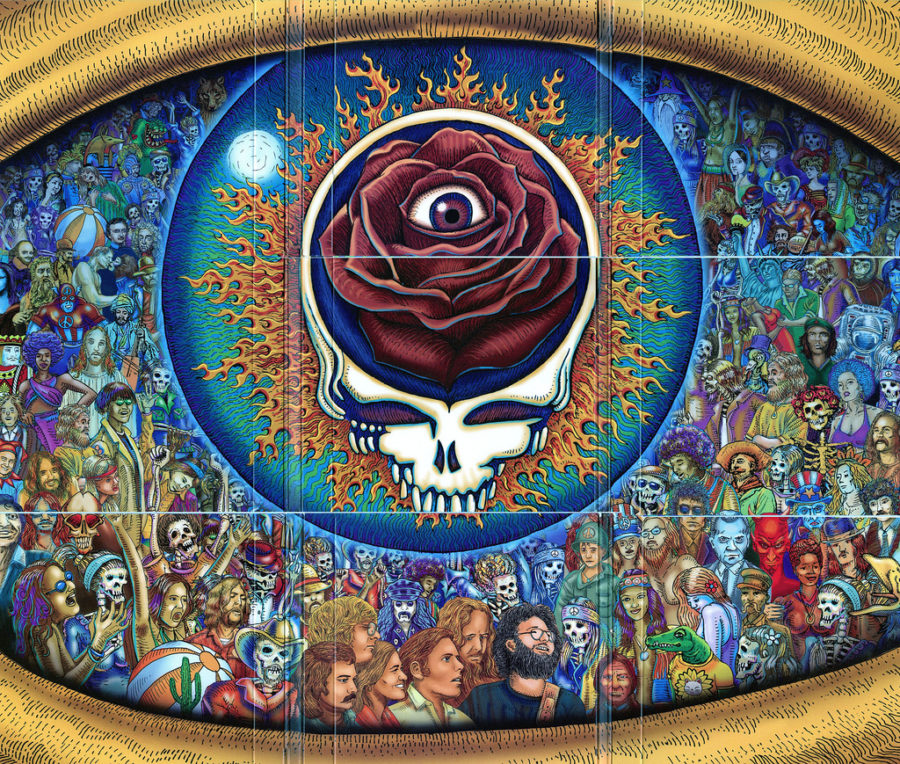Hanna Yazdi: The Greatful Dead’s influence
September 25, 2018
Not to sound like a worn, cliché teenager; but alongside all the youthful, unparalleled people out there that are obsessed with music, I prioritize music as one of the most important aspects of my life. Music to me is more of a learning experience. I try to read between the lines of lyrics, hear the meaning in the pounding drum beat, and evaluate the real mood in the tune that commonly goes unnoticed. And to properly ‘study’ music, you have to look at all aspects of the subject, like any school class. You have to appraise an array of genres, artists, styles, lyrics, and importantly, history. Musical history is something that has always stuck out to me. Not history limited to the ‘evolution’ of bands or artists, such as Nirvana’s releasing of “Bleach” in 1989, then “Nevermind” in 1991, followed by the marriage of Kurt Cobain and Courtney Love – that’s not exactly the type of history to which I’m referring; but rather to the albums throughout a bands career, as well as the stirring effect that this music had on the music industry in modern times. There is one band in particular that I’ve followed, whose influence I’ve seen in bands worldwide: the eminent Grateful Dead. The Grateful Dead was born on June 18, 1965, when Phil Lesh joined the ‘Warlocks’ on bass, and was founded in San Francisco that following December. Throughout their impressive 30 years with all of their members, the Grateful Dead touched many genres of music, including rock, the genre in which they’re categorized, blues, country, folk, funk, jazz, electronica, and my personal favorite of theirs, psychedelia. I went through this phase a year or two ago where I really wanted to feel the Grateful Dead’s music, so I made it a priority for a couple months to listen to every studio album they ever produced. On this musical journey, being familiar with an abundance of famous rock bands of the 80s and 90s, I found that I recognized many styles of music that the Grateful Dead coined that I had heard revised in many later bands, such as Pink Floyd, The Rolling Stones, Blues Traveler, Journey, Black Sabbath, etc. Let me elaborate. Aoxomoxoa, the Grateful Dead’s fifth studio album, released in 1969, featuring eight songs that are mainly psychedelia, notably “What’s Become of the Baby?” One could argue their music was one of the most important roles in the ‘hippie-takeover’ of the 70s due to its originality. This song immediately reminded me of “The Great Gig in the Sky,” a song on Pink Floyd’s “The Dark Side of the Moon” album of 1973. This Pink Floyd song features the same sound-effect-heavy, space setting tone that was composed by the Grateful Dead just under four years prior. The same concept with Blues Traveler; the groove-focused keyboardist, harp, and prominently, harmonica player Ron Mckernan was a member of the Grateful Dead until his death in 1973. Ron Mckernan added his harmonica playing to a number of songs; something that had rarely been seen at the time. The songs “Alligator” – 1968, “Big Boss Man” – 1971, and “Smokestack Lightning” – 1973, are just a few of my favorite examples of Ron’s iconic harmonica playing across a few albums. Come 1990, Blues Traveler, a band relatively similar in style to the Grateful Dead, released an album centered around the harmonica. They have continued with this style to date. Coincidence? I genuinely don’t think so. Mind you, these are just a few of my many music-based-conspiracy-theories, but just like any conspiracy theory, the more you know, the more you believe.


